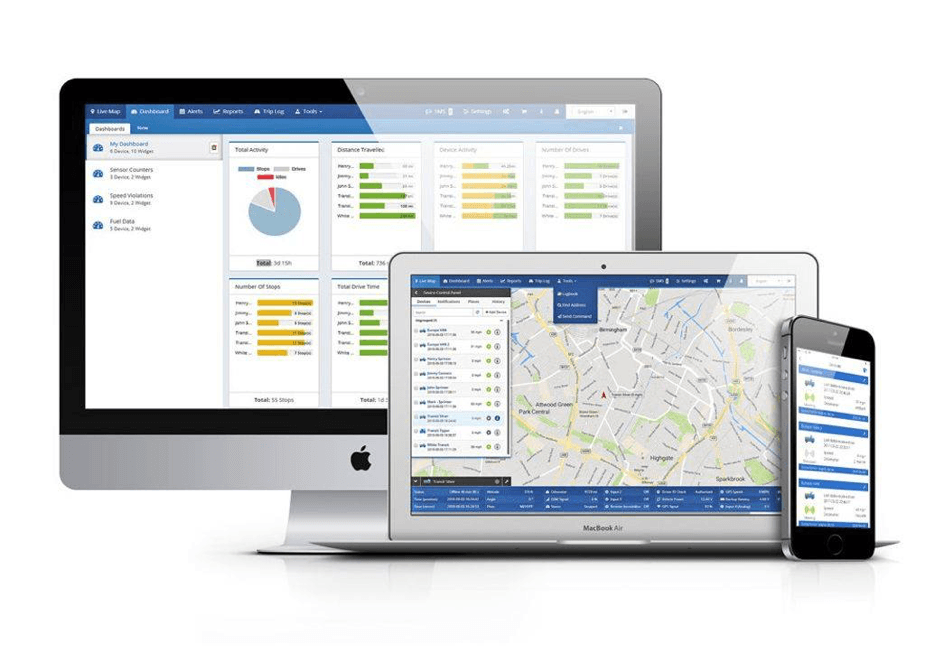From autonomous vehicles to voice-enabled smart speakers, GPS technology has invaded our homes and workplaces and is now an integral part of our lives. Combined with telematics and IoT technologies, GPS systems have become the core of every fleet business in the world. By aligning existing business systems and identifying areas for improvement within fleet operations, GPS systems have significantly increased the operational efficiency of fleet businesses. What’s more, as well as providing ground-breaking management tools, GPS and telematics systems also help companies directly reduce expenses such as for fuel and maintenance.
According to the Business Insider, the market for fleet management is predicted to grow to almost £13 billion worldwide by 2025. With the improved connectivity of IoT and telematics, businesses have more powerful and intelligent fleet management tools than ever before. Leading tech companies are constantly developing cutting-edge software to grant business owners and managers easier access to information about their vehicles. Telematics has transformed fleet management systems from showing each vehicle as a dot on a map to providing detailed information about each vehicle which managers can use to oversee and run their operation seamlessly. Fleet management systems have seemingly endless benefits for businesses, as they provide a 360-degree view of a fleet’s daily operations.
Resource management is a vital part of any fleet operation, which means that fleet managers have to be meticulous about job scheduling. From distributing tasks to monitoring the time spent on job orders, it is a nightmare from a business perspective to assign and manage hundreds of vehicles and employees. However, by integrating telematics and GPS systems into their infrastructure, businesses can reduce the number of time administrators have to spend on these daily tasks, while gaining full visibility into each employee’s designated routes and work performance. Fleet management systems also keep detailed records of previous job orders; by using this data to compare how long it takes for drivers to travel to a job site and how much time they spend at the location, the scheduling of recurrent jobs will be more efficient. It will also eliminate false fuel and overtime claims, with definitive timelines for arrivals, departures, and mileage for each work order.

Route optimization plays a key role in cutting costs throughout a fleet. Although this requires vast amounts of information, proper route optimization helps drivers reach their destinations faster and allows employees to spend more time with customers. After multiple vehicles have used the same delivery path or travel route, certain patterns emerge that can help field managers improve existing routes and increase productivity. As a result, travel times are shortened, fuel costs lowered, and vehicle wear reduced.
When you have a fleet of tens or even hundreds of vehicles, keeping them all in good shape is easier said than done. Vehicles tend to malfunction at seemingly random times – en route to delivery or traveling to a job site – but a good telematics system will allow access to engine error codes, which managers can use to generate and analyze vehicle performance reports that show clear indications of when a vehicle needs servicing. Rather than sending healthy vehicles for inspection and redundant repairs, businesses can save significant amounts of money by scheduling maintenance only for company vehicles actually in need of repairs. Long-haul trucks and frequently used fleet vehicles suffer wear and tear at an accelerated rate, meaning that managers always need to be on their toes to ensure all vehicles are serviced and repaired before embarking on a trip. Maintaining a healthy fleet reduces vehicle downtime by eliminating unexpected malfunctions and wasted fuel, which also reduces operational costs in the long run.

Satisfied customers generate more revenue and recommend your business to other companies which will help grow your customer base. Fleet management systems bring essential tools to the table to ensure customer satisfaction and loyalty. We live in an age of information; customers of all kinds demand to be informed at every step – from massive enterprises awaiting large shipments to individuals expecting goods to be repaired. No matter where company vehicles are, field managers can locate them with ease and dispatch nearby vehicles and even reroute them around obstacles for faster delivery times.
Connecting the different branches of business operation at an optimum level is an administrative nightmare. When dealing with hundreds of fleet vehicles, information flow is key in streamlining field operations. GPS tracking systems allow managers to create a central hub of information that connects all the essential systems and provides accurate, actionable data that can be accessed by fleet managers on-demand. Running a company with many moving assets requires a constant juggling of variables and resource management. Telematics and GPS systems offer total control over a business operation with innovative management tools, enabling fleet businesses to operate with greater efficiency and increased ROI.



